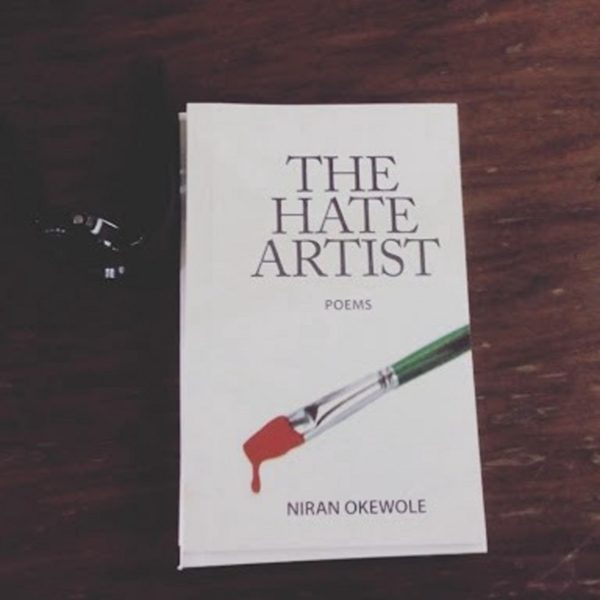
Logarhythms is Niran Okewole’s first poetry collection, and it is with this that he established himself as a poet to be taken seriously. As its title suggests, Logarhythms strives to blend scientific precision (of logarithm) with poetic musicality (rhythms) in a bid to create something both human and humane. The book equally draws attention to the multiple semantic affordances of poetic engagements since logarithm as a mathematical theory works by raising a fixed base to an exponent. The result of this sort of engagement is all too familiar: a poetic offering that is at once experimental, multilayered, and cryptic. Consider, for example, the following poem “West West Ground” from the collection:
What did Sylvia Plath find
When she opened the bell jar?
Fascists? Crazy bees? The humming
Chorus of a mad house where the
Streams of Prozac-consciousness
Flow beyond the urinals.
Perhaps it was David Lodge
Seeking therapy in the
Existentialist nonsense of Kierkegaard.
No matter, these faces are black,
Not white. These faces are not faces.
Only masks. That psychiatrist/revolutionaire –
Whatshisname? Fanon? He should come see
This old curiosity shop,
Otro loco mas in a clean, well-lighted place.
They are the wretched of the earth.
The poem above, sufficiently difficult on first reading, confronts the reader with the rawness of psychiatric discourse. Using the art of naming as a fixed base, the poem points in different exponential directions, which all explore mental illness, the predicaments of its victims, and philosophical subjects at various times in history. Names here serve as roadmaps, not as vanity vanes, to the poem’s overall thematic obligation(s). In the opening stanza, for instance, the poet poses a rhetorical question, itself a kind of interior monologue, about what Sylvia Plath might have seen in “the bell jar,” in the asphyxiating and maddening hole of existence. This single question is quickly multiplied by the time we get to the third line of the stanza. By the fifth line of the same stanza, the poet presents us with a drug name—Prozac. In the second stanza, we encounter Lodge, Kierkegaard, and Fanon. And in the last, we see “Otro loco mas” and “a clean, well-lighted place,” both of which are directly taken from Hemingway’s short story, “A Clean, Well-Lighted Place.”
Multiply Plath’s presence in the poem above by a variable in psycho-literary discourse and you will get both her infamous novel, The Bell Jar, and the somewhat prophetic nature of the book. A novel about mental illness and attempted suicide, The Bell Jar represents (and foreshadows) Plath’s own battle with similar problems. Plath committed suicide not long after the book was published, thus freeing herself from “the bell jar” that is life, and becoming, in the words of Achebe, the very “truth of her own fiction.” Also, multiply Prozac’s presence by another variable and you get an anti-depressant. Do the same for Lodge, Fanon, and “Otro loco mas” (literally translating to “another crazy one” in Spanish), and you’ll see how and where they fit within this discourse. But perhaps more important is Fanon’s presence in the poem. To be sure, Fanon stands in the centre of the poem as an anchor, allowing us to see that the psychiatric patients in the world of this poem are not “white” (represented by the white figures in the poem) but “black faces.” But not just that, these are black faces in white masks, psychically devastated and divided between two cultures. In the last line of the poem, we again encounter Fanon who helps us to see that the patients admitted to the West West Ground are postcolonial subjects destroyed by both colonialism and the “post-colonial” barbarism that it occasioned.
Published in 2005, there is no doubt that Logarhythms clearly pointed up the promise of Okewole as a gifted poet. He would afterwards go on a ten-year hiatus, broken in 2015 with the release of The Hate Artist. In the intervening years between his debut volume and THA, Okewole published widely in anthologies and journals, all the while maintaining a three-way focus that would later culminate in THA. In several ways, THA furthers the discursive tracks of Logarhythms in matters of experimentation, precision, conciseness, multiplicity of meaning, abstraction, and more importantly, onomastics. Especially in matters of form, this (latest) collection recalls the discipline of carpentry that Derek Walcott—an obvious influence in this collection—refers to in a 1985 interview with Edward Hirsch. Comparing carpentry to the utilitarian simplicity of Protestantism, Walcott notes,
At this period of my life and work, I think of myself in a way as a carpenter, as one making frames, simply and well …. So we can then say the craft is as ritualistic as that of a carpenter putting down his plane and measuring his stanzas and setting them squarely. And the frame becomes more important than the carpenter.
In THA, we can say that Okewole comes across in many ways as a carpenter. Here, we find something very close to Walcott’s conception of poetry: short lines, measured lineation in discernible patterns, numbered stanzas, and near-perfect punctuation. Divided into three sections that hold a total of thirty-nine poems, THA explores three broad concerns: travel, psychiatry/mental illness, and history/memory (of evil). In each of these sections, as we shall see in the analysis that follows, the collection names (people, places, and texts) profusely, breaking down cultural, textual, and national insularities that often particularize, rather than universalize, human experiences. The prelude, “The Word Shop,” sets the tone for what is to be expected in the rest of the collection. Etched in five stanzas, “The Word Shop” presents a story of a modern, capitalist word shop where signs function strictly for their monetary values. The poem also presents the “Yahoo! guy” whose tool of deception is “con words/cum words.” In this poem, words emerge as the major modality through which we live in the world: either as an ad sign ‘“Park’n’Shop,”’ a “FCUK” word, or a linguistic material sent on errand by “con artists.”
With fourteen poems in total, the first section of the book opens with “Lost Poems,” a poem dedicated to “D.W.” Reading further, this D.W. becomes revealed as Derek Walcott through the reference to his friend, “Joseph [Brodsky], the Jew of Russia.” The allusion to the “old monkey mountain dreamer” and the poetic re-rendering of the Homeric tale in the first part of Omeros further reveal this D.W. as Derek Walcott. The poet writes: “He is Achille, an angler/Fishing for lost love, for Helen,/Searching for Africa.” In these lines, we see Okewole engage in a kind of meta-textual poetics in which a text gets its own meaning and thematic directions by leaning and commenting on another text. Thus, in this poem, Walcott’s postcolonial concerns in Omeros provide a sub-text for making sense of Okewole’s own concern about the “lost children” of Africa. This meta-textual poetics continues in “Caliban,” where the poet uses William Shakespeare’s The Tempest and Joseph Conrad’s Heart of Darkness as intertextual foundations for a counter-discursive response to the colonial depiction of Africa as a “[p]erfect foil for the lily-white Other.”
BESIDES these postcolonial concerns, these writing-back gestures, this first section is home to some of the book’s strongest poems about travel and other places beyond the poet’s point of origin in Africa. It is also home to poems about the universality of hate, which is the book’s central subject matter. Using Pablo Neruda’s “I Am Explaining a Few Things” as a sub-text, the poet speaks to the latter subject in “Random Nights.” Here, night becomes a springboard for a reflection on a myriad of issues, ranging from autocratic military restrictions on freedom of movement to the universal manifestation of evil (depicted through the universal presence of the “sky”). His words: “Nights of camouflage and boots and border patrol … /Nights when pyramids of hate scribble/Their signature against the sky.” The same poetic rendering of evil is also present in “First Breath”—otherwise a poem of birth and hope—where the poet paints a near-apocalyptic picture of the world: “nukes/Are all over the world tonight,/From Tehran to Islamabad.” Other poems in this section broadly speak to movement across several national borders, pointing us, of course, in the direction of the global formations of 21st-century Nigerian poetry. Such poems include “Voyage Around Bar,” where the reader is taken on a tour of Lagos, Accra, Nairobi, and Dakar and “In the Ghetto,” where the deplorable living conditions of the proletariat become a connecting point between Milan and Lagos, and between Lagos and Rio de Janeiro.
IN THE second section of the collection, the poet’s concern switches to mental illness and psychiatry as a medical practice. Here, the poet brings into focus his career as a psychiatrist and his daily observations of madness. This section opens with “The Rings of Kekule,” a poem about the two “scientific” dreams of Friedrich August Kekulé, the German chemist credited with the discovery of the cyclic structure of benzene. In the first dream, the poet notes, “atoms – carbon, hydrogen, oxygen –…/Gamboled mockingly before his eyes.” This was Kekulé’s first dream and it involved atoms dancing and forming themselves into a chain. In the second dream, Kekulé’s dancing atoms “morphed into pythons,/And one took its own tail in its mouth.” Juxtaposing the “science” behind these dreams with the spiritual accuracy of Joseph’s interpretation of Pharaoh’s dream about seven fat and seven lean cows, this poem highlights the “magic/Of dreams.” But this reflection on the mythical and scientific dimensions of dreams is also the poet’s strategy of placing the reader on the Freudian royal road. This (matter of the mind) is further attended to in the next poem through the eyes of “I, Rene [Descartes].”
IN “Bergson Reloaded”—still in the second section—the reader encounters a physicist who doubles as a neurologist. Over beer and peppersoup in Ife, this figure talks about Einstein’s relativity theory, moving seamlessly afterwards to a discussion of time in mania and depression. To make sense of the latter, he draws insights from Henri Bergson’s controversial conceptions of freewill, intuition, and élan vital (life’s vital impulse that makes evolution possible). Mania and depression also constitute the subject matter of “Concerto for Four Drugs” in which the poet sings an ode to psychiatric drugs and their intervention in helping psychiatric patients manage their illnesses. The poet first mentions Lithium and its use in the treatment of bipolar disorder. Next, he mentions the anti-psychotic drug, Serenace, and its use in the treatment of delusion, auditory hallucination in which “there were voices/Commenting, voices commanding,” and other types of schizophrenia such as “Paranoia, catatonia, hebephrenia.” There are also Prozac, mentioned earlier, that can help a depressed “Barbie singing suicide as redemption/ Song” and the sedative, Ativan, which helps patients with anxiety that presents as insomnia: “Sleepless nights, nights of watching/Al-Jazeera hours go by.” Similar poems in this section include, among others, “A Natural History of Schizophrenia,” in which psychiatrists themselves more or less “mingle” with the illnesses that they treat and talk about, and “Haiku,” in which we see the neurological disorder, St. Vitus’ dance, the “[p]atron saint of the youth.” In all these poems, the poet confronts the reader with empathetic descriptions of those who occupy that other space, which Goffman describes as a “total institution.” He presents madness as not just what those who are “insane” suffer but an immanent part of the everyday life of the so-called “sane” people.
THE THIRD section of the book is a politically committed one and opens with the title poem, “The Hate Artist.” Obviously the most successful poem in this collection, this poem paints the colour of hate, emphasizing its borderless and ubiquitous manifestations. From Germany where we encounter Hitler, the “Artist with a meinkampf, brushstroke moustache” to Alabama where we encounter the Ku Klux Klan (KKK), “white/Worshipper of a black cross, cross upside down,/Cross burning, burning” and from Rwanda where we meet the perpetrators of the Rwandan genocide who “love to sculpt the lean, lanky Tutsi frame” to Sudan where stand the “bloodthirsters” who do “Darfur bronze casts on the side,” evil is given an unforgettable voice and face in this poem. And in this transnational, transracial depiction of evil, an archetypal hero/heroine of hate emerges who “loves the texture of grief, like velvet,/Loves the feel of passion in heat/Waves, shock waves, the erotic melody of a/Bomb blast.”
SINCE THE greatest artistic productions undoubtedly require an intense sense of duty and dedication—obsession, even—the hate artist that we are confronted with in this poem and in this collection becomes an allegorical representation of the highest kind of devotion to evil. It is not that he converts hate into a jejune kind of art—it is that he converts it into the most sublime and most immaculate of artistic and aesthetic engagements. This hate artist is equally a figure that reminds us of myriad universal manifestations of evil. Thus, while the poet remains fully committed to local African concerns, he is also quick to remind us in this collection that there is an almost natural proclivity in humans, irrespective of race, gender, age, class, or religion, that propels them towards evil. Unchecked, this proclivity becomes perfected into an artistic devotion of the greatest kind.
While this collection delves skilfully into all the three areas described in the foregoing, it is nevertheless a collection with its own problems. There are three of these problems that stand out. The first is the cryptic language of the collection. In poems such as “Surds,” “Snowman,” and “The Gods Speak Back,” we particularly encounter a poet who seems to indulge in obscurantism for obscurantism’s sake. And in this regard, the reader may justifiably respond to some of the dense poems in the collection in this manner: To what end is all this? The second problem relates to the titles of the poems, some of which have no relationship with the issues addressed in the body of the poems. This is true, for instance, of “Lost Poems,” “Ondine’s Curse,” and “A Natural History of Schizophrenia.” The third is that this collection is punctuated with medical terminologies at every turn, some of which again have little or no bearing on the overall subjects of the poems.
Yet, in many ways, this is a successful example of a poetic work—not a critical work—that reads other texts made in different spatiotemporal spaces “globalectically,” to cite Ngugi wa Thiong’o. Juxtaposing different world literary (and non-literary) texts with one another, this poet dissolves the idea of the “centre” as well as racial/ethnic/national absolutisms, thus allowing the reader to see the inevitable connectivity and similarities in human experiences. The result is that each poem, by naming places, people, and other texts, becomes in itself a Globe, a world of its own multiple universals. The result is also that it makes us to see the fruitlessness in essentialization, thus morally encouraging us to respond to the problems of our time as one universal human nation. And this, of course, is one of the reasons why The Hate Artist is one of the most usefully complicated and engaging poetry collections to come out of Nigeria in recent years.
About the Author:
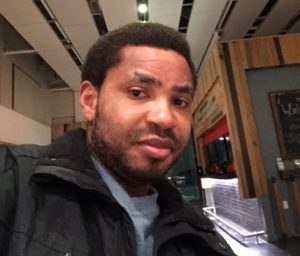 Tosin Gbogi is completing a PhD in the Interdisciplinary Program in Linguistics at Tulane University, New Orleans, USA. His research interests cover African/African Diaspora literatures and, more recently, African hip hop nation language. E-mail: [email protected]
Tosin Gbogi is completing a PhD in the Interdisciplinary Program in Linguistics at Tulane University, New Orleans, USA. His research interests cover African/African Diaspora literatures and, more recently, African hip hop nation language. E-mail: [email protected]


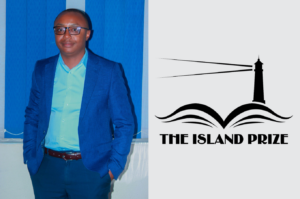

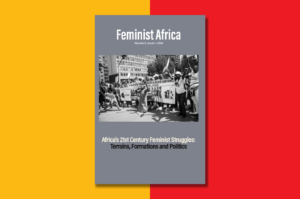

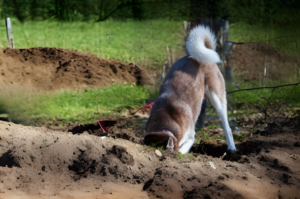
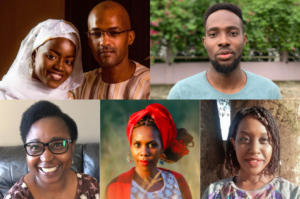

From “Logarhythms” to “The Hate Artist”: Texts, Sub-texts, and the Art of Naming in Niran Okewole’s Poetry | Tosin Gbogi – Ife Poetry Portal March 17, 2018 19:43
[…] https://brittlepaper.com/2018/03/logarhythms-hate-artist-texts-subtexts-art-naming-niran-okewoles-po… […]